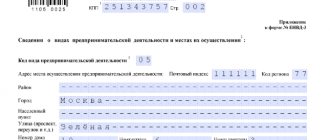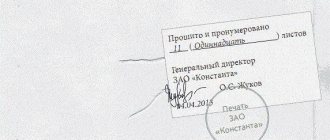Rules for accounting for fuels and lubricants have been updated
By order of the Ministry of Transport dated 04/06/2021 No. NA-51-r, methodological recommendations on fuel and lubricant consumption standards for certain brands of cars produced in 2008 and later were updated. It is recommended to use consumption standards not only when making calculations, but also when writing off the costs of fuels and lubricants (but this is a right, not an obligation of enterprises).
The updates affected the following sections:
- “Domestic and CIS vans manufactured since 2008”;
- “Domestic and CIS passenger cars produced since 2008” (for Lada Granta, Lada Priora, Lada Kalina, Lada Vesta, etc.);
- “Domestic and CIS flatbed trucks produced since 2008”;
- “Domestic and CIS buses since 2008.”
The maximum values of winter surcharges to fuel consumption standards in Sevastopol and Crimea were also approved. These indicators are necessary for calculating the cost of transportation and other types of transport work, making payments to vehicle drivers and users, and planning the needs of companies for the provision of fuel and lubricants.
Fuel and lubricants in the tank of a rented car
When renting out a car, the fuel tank is also fully or partially filled. Here, as in the situation with the purchase and sale, you have to figure out how to take such gasoline into account.
Sometimes organizations simply agree that the lessor transfers a certain amount of fuel, and the lessee, at the end of the lease period, undertakes to return the same amount along with the car. In this case, ownership of fuel and lubricants remains with the lessor, and the transfer of fuel is not reflected in the accounting records.
But this option is not entirely correct for the tenant, because in fact he uses the gasoline received and, as a result, must make certain entries in the accounting registers. For this reason, most companies still show the transfer of fuel and lubricants from the lessor to the lessee.
How to reflect such a transfer? The most common option is implementation. First, the lessor sells fuel to the lessee, and after the end of the contract, the lessee sells the same amount to the lessor.
Another option is a commodity loan. Here the landlord acts as a lender and the tenant as a borrower. Both options are completely legal, and the accountant can only choose the one that is most convenient in a particular situation.
Rules for accounting for fuels and lubricants - standards
Companies have the right to approve their own fuel consumption limit:
- borrow information about the consumption of fuel and lubricants from the technical documentation for the machine;
- They collect a commission and take measurements.
Gasoline consumption is measured according to the following scheme (separately for an empty and loaded vehicle, for summer and winter trips, for idle time with the engine running, etc.):
- Gasoline is poured into an empty tank and its volume is recorded.
- The car drives until the gas tank is completely empty.
- The speedometer determines how many kilometers the car has traveled before the tank is empty.
- It is determined how much fuel is required to travel 1 kilometer (the number of liters divided by the number of kilometers).
- An act of the commission is drawn up with the signatures of all its members.
Important!
Periodically, it is necessary to reconcile the data reflected in the accounting records with the actual balances. As for determining the standard for gasoline consumption, it is allowed to set a basic standard and increasing coefficients for trips on congested highways, for trips in winter, etc.
How to conduct a fuel and lubricants inventory
Since write-off according to the standard implies errors, the organization must periodically reconcile the data reflected in the accounting records and the actual balances. This reconciliation can be done once a week, a month or a quarter. Some companies do it daily.
To determine the actual balance, different methods are used. The simplest is to pour gasoline from the tank into a measuring container and find out the volume. However, organizations rarely resort to this method.
Another method is more common. Its essence is as follows. First you need to completely fill the tank. Then you need to look in the technical documentation to determine the volume of the tank. And also look at the gas station receipt to see how much fuel was poured into the tank. If we subtract the volume of gasoline poured from the volume of the tank, we get the remainder that was in the tank before refueling. This figure must be checked with the one that appeared according to accounting data for the same date.
There are other ways - for example, using a special probe with a printed scale. However, none of the methods, except for emptying the tank, eliminates errors.
Get a free demo version of the “Contour.Waysheets” service
Rules for accounting for fuels and lubricants: postings
Accounting for purchased fuels and lubricants will depend on how they were purchased:
| Operation | DEBIT | CREDIT |
| Purchase of fuel and lubricants using fuel cards and coupons | ||
| Reflection of funds transferred for cards/coupons as an advance issued | 60, subaccount “advances issued” | 51 |
| Acceptance for deduction of VAT on advance payments issued | 68, subaccount “VAT calculations” | 76 |
| Acceptance for accounting of fuels and lubricants issued using coupons or cards (based on a report from the company issuing coupons or cards, or coupon stubs from drivers). | 10 | 60 |
| Reflection of VAT on fuel and lubricants | 19 | 60 |
| Acceptance for deduction of VAT on fuel and lubricants | 68, subaccount “VAT calculations” | 19 |
| Restoration of VAT accepted for deduction from the transferred advance payment | 76 | 68, subaccount “VAT calculations” |
| Purchase of fuel and lubricants for cash | ||
| Issuance of money against a report for the purchase of fuels and lubricants | 71 | 50 |
| Capitalization of fuel and lubricants based on an advance report from the driver | 10 | 71 |
| Reflection of VAT on purchased fuels and lubricants | 19 | 71 |
| Acceptance for deduction of “input” VAT on fuel and lubricants | 68, subaccount “VAT calculations” | 19 |
The cost of fuel and lubricants consumed per month is calculated using waybills or reports from mileage and fuel consumption monitoring systems. Write-offs are made to expenses on the last day of the month:
| Operation | DEBIT | CREDIT |
| Including the cost of fuel and lubricants in costs (only if there is a seller’s invoice) | 20 (26, 44) | 10 |
Free use of a car
An organization may enter into an agreement for the gratuitous use of a car (loan), according to which the borrower is obliged to keep the item received for gratuitous use in good condition, including carrying out routine and major repairs, as well as bearing all expenses for its maintenance, unless otherwise provided by the agreement.
The organization's expenses for the maintenance and operation of a car received under a free use agreement reduce taxable profit in the generally established manner, if the agreement stipulates that these expenses are borne by the borrower.
Photo source: exkavator.ru An organization can enter into an agreement for the free use of a car
Separate rules provided for lease agreements apply to gratuitous use (loan) agreements. Expenses for fuel and lubricants are taken into account in the same way as a rented car, since the organization manages it.
The transfer of property for temporary use under a loan agreement is, for tax purposes, nothing more than a service provided free of charge. The cost of such a service is included by the borrower in non-operating income (clause 8 of Article 250 of the Tax Code of the Russian Federation). This cost must be determined independently, based on data on the market cost of renting a similar car.
Rules for accounting for fuel and lubricants received when purchasing a car
When you buy a car, there is usually a certain amount of gasoline left in the tank. If the volume of gasoline is specified in the purchase and sale agreement, fuel and lubricants can be capitalized; if not, there are options:
- when there is very little gasoline in the tank, it is not taken into account, and the accountant notes the receipt and write-off of gasoline from the moment of the first refueling;
- if the tank is almost completely full, you need to find out the volume of fuel and arrange a free receipt (this will be taxable income, the cost of fuel and lubricants is posted to DEBIT 10 CREDIT 98, when writing off, entries are made to DEBIT account 20 (26, 44) and CREDIT 10, as well as DEBIT 98 CREDIT 91) or identify surpluses (they are included in income and posted to DEBIT 10 CREDIT 91, income is generated in tax accounting).
An example of writing off fuel and lubricants using waybills
One of the most common types of fuel and lubricants is gasoline. Let's consider the example of purchasing and writing off gasoline.
Pervy LLC (located in the Moscow region) purchased 100 liters of gasoline in September at a price of 38 rubles. without VAT.
At the same time, at the beginning of the month, the LLC had a stock of gasoline of the same brand in the amount of 50 liters at an average cost of 44 rubles.
Gasoline in the amount of 30 liters was used to refuel a VAZ-11183 Kalina car. The organization uses a car for official transportation of management personnel.
The organization uses average cost estimates for materials.
Accounting for fuel and lubricants upon admission
| Dt | CT | Amount, rub. | Operation (document) |
| 10 | 60 | 3 800 | Gasoline received credit (TORG-12) |
| 19 | 60 | 760 | VAT reflected (invoice) |
We calculate the average write-off cost for September: (50 l × 44 rubles + 100 l × 38 rubles) / (50 l + 100 l) = 40 rubles.
Option 1. Accounting for fuel and lubricants when writing off after the fact
The following marks are made in the submarine: fuel in the tank at the beginning of the voyage - 10 liters, issued - 30 liters, remaining after the voyage - 20 liters.
We calculate the actual use: 10 + 30 – 20 = 20 liters.
Amount to be written off: 20 l × 40 rub. = 800 rub.
| Dt | CT | Amount, rub. | Operation (document) |
| 26 | 10 | 800 | Write-off of gasoline (accounting statement-calculation) |
Option 2. Accounting for fuel and lubricants when writing off according to standards
Mileage marks are made in the PL: at the beginning of the voyage - 2,500 km, at the end - 2,550 km. This means that 50 km have been covered.
In paragraph 7 of Section II of Order No. AM-23-r there is a formula for calculating gasoline consumption:
Qн= 0.01 × Hs × S × (1 + 0.01 × D),
where: Qн — standard fuel consumption, l;
Hs - basic fuel consumption rate (l/100 km);
S—vehicle mileage, km;
D is the correction factor (its values are given in Appendix 2 to Order No. AM-23-r).
According to the table in sub. 7.1 by car make we find Hs. It is equal to 8 liters.
According to Appendix 2, coefficient D = 10% (for the Moscow region).
We calculate gasoline consumption: 0.01 × 8 × 50 × (1 + 0.01 × 10) = 4.4 l
Amount to be written off: 4.4 l × 40 rub. = 176 rub.
| Dt | CT | Amount, rub. | Operation (document) |
| 26 | 10 | 176 | Write-off of gasoline (accounting statement-calculation) |
Since the car is used as a company car, the cost of accounting for fuel and lubricants in the tax accounting of fuel and lubricants will be recognized as other expenses. The amount of expenses will be equal to the amounts recorded in the accounting records.
Rules for accounting for fuel and lubricants - accounting for compensation
If personal cars of employees are used in the production process (with the consent and knowledge of the employer), they may be paid monetary compensation without restrictions. According to Article 188 of the Labor Code of the Russian Federation, the employer is obliged to pay such compensation, and their amount must be stipulated in the employment contract or in an additional agreement. The amount of compensation is not limited, but must be justified. Funds are paid at the end of the calendar month.
It is recommended to draw up an additional agreement to the employment contract (with a vehicle registration certificate and a copy of the operating manual attached), which would provide for the following points:
- the employee must keep records of business trips in travel vouchers;
- waybills and documents evidencing travel expenses incurred are submitted to the accounting department on the last working day of the month;
- the employer undertakes to pay compensation for the use of an employee’s car;
- an employee from ... (date) in the performance of work duties uses a car belonging to him for business purposes (information about the car);
- compensation is calculated according to the fuel consumption standard specified in the vehicle’s operating manual and mileage.
Compensation is calculated in proportion to the number of days worked by the employee, during vacation, business trip, etc. no payment is made.
For tax purposes, compensation for the use of an employee’s personal car is rationed:
- reimbursement of the cost of fuel, separate from the payment of compensation, is an excess payment that cannot be taken into account when calculating the tax base for income tax (Letter of the Ministry of Finance of the Russian Federation dated August 23, 2013 No. 03-03-06/1/39239);
- expenses for payment of compensation are taken into account in expenses (as of the date of actual payment to the employee) within the limits approved by Decree of the Government of the Russian Federation dated 02/08/2002 No. 92.
An example of accounting for compensation for the use of a personal car
The employer paid the employee 5,500 rubles for the use of an employee’s passenger car with an engine capacity of less than 2 thousand cubic meters for production purposes. see. It will be possible to reduce the tax base for income tax only by 1,200 rubles according to the norm. Postings on the date of payment of compensation:
| Operation | DEBIT | CREDIT | Amount (rub.) |
| Reflection of the amount of compensation in expenses (with the attachment of a certificate calculating the amount for the month of using the car) | 20 | 73 | 3000 |
| Transfer of compensation amount to an employee | 73 | 51 | 3000 |
| Reflection of permanent tax liability | 99 | 68 | 360 (RUR 3,000 – RUR 1,200) x 20% |
What is a waybill
A waybill is a primary document that records the vehicle’s mileage. Based on this document, gasoline consumption can be determined.
Organizations for which the use of vehicles is the main activity must use the PL form with the details specified in Section I of Order No. 368 of the Ministry of Transport dated September 11, 2020.
The document came into force on 01/01/2021. Main innovations:
- A waybill is required for any vehicle operation, regardless of the type and nuances of transportation.
- A new detail “Transportation information” has been introduced.
- It is necessary to indicate the brand of the trailer.
- The responsible person is obliged to indicate the time the vehicle leaves the line and the time it returns.
ConsultantPlus experts spoke about other changes in the waybill. Get free demo access to K+ and go to the Review Material to find out all the details of the innovations.
For organizations that use a car for production or management needs, it is possible to develop a PL taking into account the requirements of the Law “On Accounting” dated December 6, 2011 No. 402-FZ.
Do you doubt the correctness of the posting or write-off of material assets? On our forum you can get an answer to any question that raises your doubts. For example, in this thread you can clarify what the basic fuel consumption rate is recommended by the Ministry of Transport.
An example of an order for approval of a DP can be found here.
In practice, organizations often use PLs that were approved by Decree of the State Statistics Committee of the Russian Federation dated November 28, 1997 No. 78. This resolution has PL forms depending on the type of vehicle (for example, Form 3 - for a passenger car, Form 4-P - for a truck) .
For a sample of filling out the updated waybill, see here .
You can learn about filling out waybills taking into account the latest innovations in the Ready-made solution from ConsultantPlus. Trial access to the legal system is free.
and you can get a prompt answer on filling out the waybill in our discussions in the VK group .
Waybills must be recorded in the waybill register. Accounting for waybills and fuels and lubricants is interconnected. In organizations that are not motor transport by nature of activity, PLs can be drawn up with such regularity that it is possible to confirm the validity of the expense. The main thing is to confirm the expenses. Such conclusions are contained, for example, in the letter of the Ministry of Finance of Russia dated 04/07/2006 No. 03-03-04/1/327, the resolution of the Federal Antimonopoly Service of the Volga-Vyatka District dated 04/27/2009 No. A38-4082/2008-17-282-17-282.
Read about waybills for individual entrepreneurs in the article “What are the features of a waybill for individual entrepreneurs (form)?”
Rules for accounting for fuel and lubricants - confirmation of fuel costs
Waybill forms are required for use only by professional carriers. Non-core companies have the right to develop their own forms and reflect them as an appendix with a sample in their accounting policies. You should remember these points:
- a separate waybill must be issued for each vehicle;
- The maximum validity period of the sheet is 1 month;
- The waybill reflects the exact route of the trip and fuel consumption.
If the company has more than two vehicles, it will be easier to account for fuel costs if you maintain internal reporting.
Reporting forms, deadlines for preparation, list of responsible persons - everything is approved by management in the order. Useful reporting forms include:
- A report on the movement of fuels and lubricants, drawn up by the employee financially responsible for the issuance of fuels and lubricants on the basis of acts, requirements, invoices, cards for recording fuel consumption, and a sheet for recording the return of coupons. The document contains information about the employee who received the fuel, types of fuel and lubricants, units of measurement, purpose of issue, balance at the beginning/end of the reporting period, receipt, disposal.
- Record sheet for the issuance of fuels and lubricants. The document indicates the fuel issued to all employees. Drivers present a waybill or other document, the total amount of fuel and lubricants is summarized at the end of the statement, along with the name and brand of fuel and lubricants, information about the car (registration number, model, make), information about the driver (full name, day of fuel issue, personnel number), information about fuels and lubricants required during the period of vehicle maintenance and repair (based on invoices and limit cards).
Rented transport
You can obtain a vehicle (car, truck, crawler excavator, front loader) for temporary possession and use by concluding a vehicle rental agreement with a legal entity or individual.
Read
Accounting for costs of fuels and lubricants (part 2): waybills
Under a lease agreement, the lessor (lessor) undertakes to provide the lessee (tenant) with property for a fee for temporary possession and use. Unless otherwise provided by the vehicle lease agreement, the lessee bears the costs arising in connection with the commercial operation of the vehicle, including the cost of paying for fuel and other materials consumed during operation (Article 646 of the Civil Code of the Russian Federation). The parties may provide for mixed terms of payment of rent in the form of a fixed share (direct rent) and payment of compensation for the current maintenance of the leased property, which may vary depending on external factors.
Photo source: exkavator.ru If the costs of fuel and lubricants are borne by the transport employer, accounting for fuel and lubricants is identical to the situation with the operation of your own vehicle
In the case where the costs of fuel and lubricants are borne by the transport employer, accounting for fuel and lubricants is identical to the situation with the operation of his own vehicle. Such a car is simply taken into account not as part of fixed assets, but in off-balance sheet account 001 “Leased fixed assets” in the valuation adopted in the contract. A rental fee is charged for its use, but depreciation is not charged. The rent is included in other expenses associated with production and (or) sales, regardless of who rents the car from a legal entity or an individual (subclause 10, clause 1, article 264 of the Tax Code of the Russian Federation).
Read
Lease agreement for a vehicle with crew (sample). Advised by a lawyer
At the same time, the status of a lessor affects the tax consequences for other taxes. So, if a car is rented from an individual, he has taxable income. As for the Unified Social Tax, it is necessary to distinguish between renting a vehicle with and without a crew (clause 1 of Article 236 and 3 of Article 238 of the Tax Code of the Russian Federation).
Photo source: exkavator.ru Landlord status affects tax consequences for other taxes
A waybill is issued for the rented car for the duration of the work, since the organization disposes of the car. And clause 2 of clause 1 of Article 253 of the Tax Code of the Russian Federation allows to include in expenses that reduce taxable income all funds spent on the maintenance and operation of fixed assets and other property that is used in production activities. This also applies to fuels and lubricants that are used on a rented car.
Answers to common questions about fuel and lubricants accounting rules
Question #1:
How to write off gasoline based on its consumption if it is impossible to understand how much fuel is left in the tank of a filled car?
Answer:
As a rule, for these purposes, actual fuel consumption is determined as the number of kilometers on the speedometer multiplied by the standard adopted by the company.
Question #2:
The company applies fuel consumption standards established by the Ministry of Transport for tax accounting purposes. Is it possible to apply similar standards in accounting?
Answer:
Yes. The same limit value (according to the standards of the Ministry of Transport or independently developed standards) can be used when calculating the gasoline consumed and when reducing the tax base.
Satellite navigation systems
Nowadays, so-called satellite tracking systems (another name is satellite navigation systems) are becoming increasingly popular. They allow you to determine exactly when and how many kilometers the car has traveled and how much gasoline it has consumed. In this regard, the company that purchased such a system can write off actually consumed fuel and lubricants without using standards. The need for inventory also disappears.
To reflect in accounting the transition to the use of a satellite system for accounting for fuel and lubricants, it is necessary to issue an order that cancels the previously used fuel consumption standards. In the same document, a new method of fuel accounting is established - based on system data. It is important that the date of the order coincides with the date when the system was put into operation.
Next, you will need a printout from the system, which shows the gasoline consumption for each flight. The accountant will attach these printouts to the waybills, and based on these documents, write off the fuel and lubricants. By the way, the Russian Ministry of Finance does not object to this method (letter dated June 16, 2011 No. 03-03-06/1/354).
Write-off order
An order for the write-off of fuel and lubricants is issued taking into account the write-off methodology adopted by the organization. If a decision is made to refuse waybills, the document must first reflect this fact. Here is a sample order reflecting the use of technical means of monitoring the operation of a vehicle, which were discussed above.
LLC "Rassvet"
ORDER No. 5
Moscow
June 1, 2021
On establishing a procedure for calculating volumes of fuel consumption
I ORDER: 1. From 06/01/2019, calculate the volumes of fuel consumption based on actual indicators, using the technical means specified in the appendix to the order. 2. In case of technical failures and breakdowns, calculations should be made according to the standards in accordance with the order of the Ministry of Transport of Russia dated March 14, 2008 No. AM-23-r, taking into account the amendments that were current at the time of use of the document. 3. The engineering service ensures monitoring and timely repair of technical control equipment. 4. The deputy manager for economic affairs shall ensure control of the use of fuels and lubricants according to standards in the event of failures and breakdowns of technical control means.
Director of Rassvet LLC Krasnogorov M.P.
The following have been familiarized with the order:
chief engineer Martynov A.A. Deputy Director for Housekeeping O.I. Krivitsky chief accountant Mikhalkova T.V.
FILES
Briefly
- Accounting for the write-off of fuel and lubricants is possible without using a waybill if the organization is not a carrier.
- In cases where fuel can be written off without taking into account mileage, mileage is a constant value, or modern technical systems for monitoring the use of fuel are used, the organization has the right to develop its own accounting forms, abandoning waybills.
- Having made such a decision, it is necessary to issue an order reflecting the new cost control mechanism in accordance with the legislation of the Russian Federation.
Example
Driver of a passenger car A.A. Sidorov receives from the cash register of Zima LLC on account funds for the purchase of fuels and lubricants and submits advance reports reflecting the costs of their acquisition with the attachment of primary documents. Gasoline is written off according to standards based on waybills submitted by the driver to the accounting department.
Quantitative and total accounting of fuels and lubricants is carried out using personal cards, the form of which was developed by the organization independently and approved by order of the manager. A card is opened for each driver.
The driver's balance of unwritten gasoline at the beginning of April was 18 liters at 10 rubles.
On April 3, 20 liters of gasoline were purchased for 11 rubles. For simplicity, we do not consider VAT.
On April 1, 2 and 3, the driver consumed 7, 10 and 11 liters of gasoline, respectively.
When writing off materials, the organization uses the moving average cost method, which is calculated on the date of the operation.
From April 1 to April 3, the accountant made the following entries in the driver’s card:
| date | Coming | Consumption | Remainder | ||||||
| quantity | price | price | quantity | price | price | quantity | price | price | |
| Balance as of 01.04 | 18 | 10 | 180 | ||||||
| 01.Apr | 7 | 10 | 70 | 11 | 10 | 110 | |||
| 02.Apr | 10 | 10 | 100 | 1 | 10 | 10 | |||
| 03.Apr | 20 | 11 | 220 | 11 | 10,95 | 120,48 | 10 | 10,95 | 109,52 |
The following entries were made in the organization's accounting:
April 1:
Debit 26 Credit 10-3 subaccount “A-95 gasoline in the tank of A.A. Sidorov’s car”
— 70 rub. — 7 liters of gasoline were written off according to the norms according to the passenger car waybill form No. 3 for April 1;
April 2:
Debit 26 Credit 10-3 subaccount “A-95 gasoline in the tank of A.A. Sidorov’s car”
— 100 rub. — 10 liters of gasoline were written off according to the standards according to the passenger car waybill, form No. 3, for April 2;
April 3:
Debit 10-3 subaccount “Gasoline A-95 in the tank of A.A. Sidorov’s car.” Credit 71 subaccount "Sidorov"
— 220 rub. – 11 liters of gasoline were capitalized on the basis of a cash register receipt attached to the driver’s advance report;
Debit 26 Credit 10-3 subaccount “A-95 gasoline in the tank of A.A. Sidorov’s car”
-120.48 rub. — 11 liters of gasoline were written off according to the standards according to the passenger car waybill form No. 3 for April 3.
Order
The enterprise should capitalize fuel and lubricants in a separate document based on the receipt order - “receipt of materials”.
In most cases, it writes off fuels and lubricants once a month. The procedure is carried out by accounting, or rather by a material accountant who keeps records of material resources.
His responsibilities include maintaining primary materials:
- filling out a fuel and lubricants movement sheet containing its receipt and use;
- receiving waybills, processing the information contained therein and entering them into the above list;
- acceptance of the expense report, selection and reconciliation of the data contained in it;
- drawing up a journal with a unified form 0310003 for registering receipt and expenditure orders at the cash register, if fuels and lubricants are purchased using coupons;
- processing of information contained in management orders on approval of the vehicle mileage limit, consumption standards for fuels and lubricants and the amount of surcharges for them, winter and summer periods of vehicle operation, business trips.
Fuel and lubricants are written off on the basis of the above acts by a material accountant and a commission of three or more people specially formed for the procedure.
Primary documents are substantiated by the demand invoice, gas cards, gas station receipts for the actual volume of fuel used.
How the write-off of fuel and lubricants occurs when using a personal car for business purposes is described in the article: write-off of fuel and lubricants when using a personal car for business purposes.
Norms for writing off fuel and lubricants are discussed in the article: norms for writing off fuel and lubricants.









